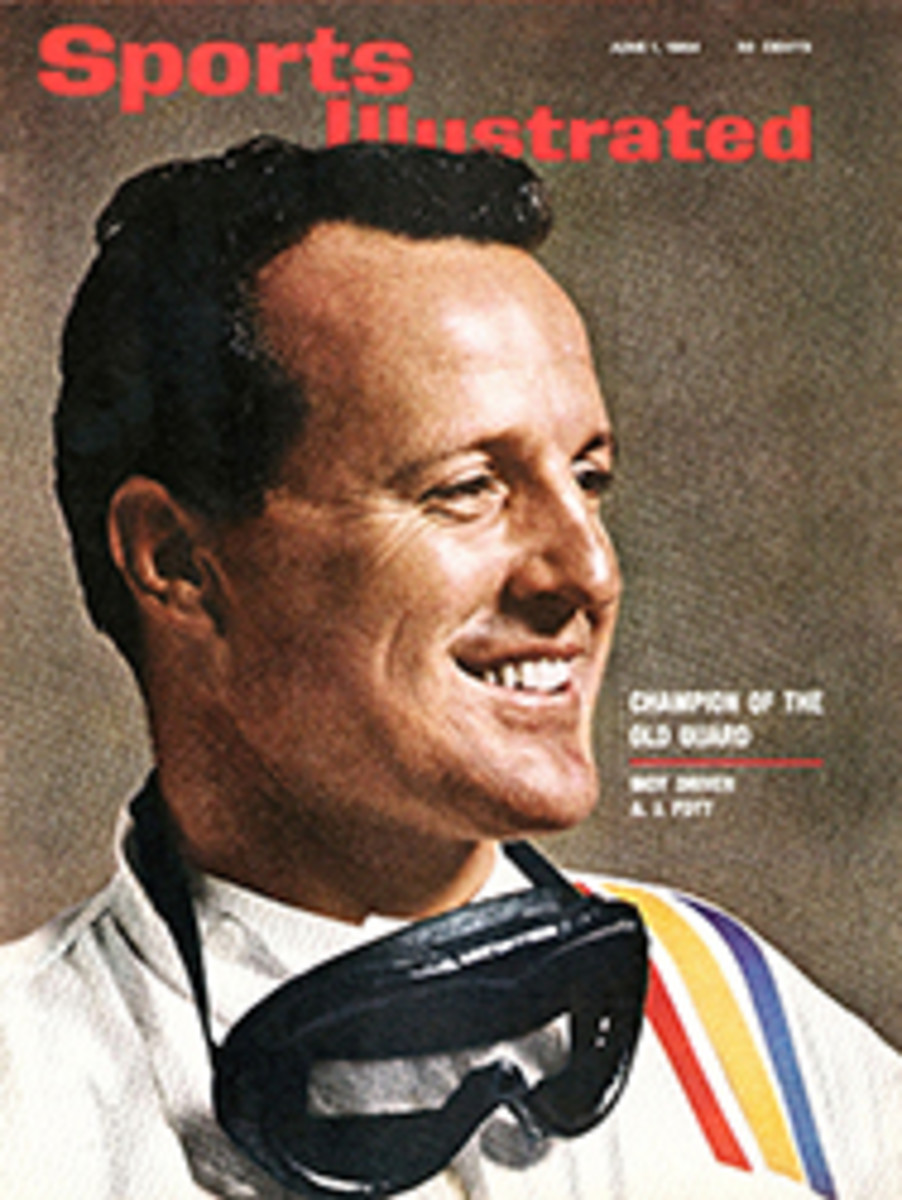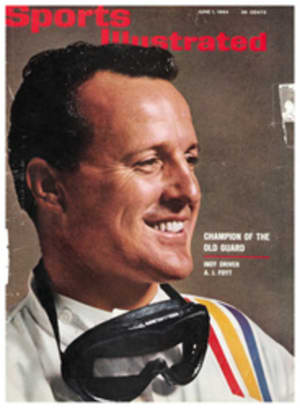
OVER, UNDER AND OVER AGAIN
There is a fancy little gadget aboard Joseph C. Byars' ocean-racing yawl Doubloon that is called a Weathercaster. It spent the day of Sunday, May 3, dutifully predicting winds of 45 to 75 knots all along the Gulf Stream. The trouble was that Byars, a cautious Tampa real estate man who had sailed his sturdy little 39-footer to a Southern Ocean Racing Conference championship in 1963, did not believe it. "I didn't think the weather around the Stream could be that bad this time of year," was the way he put it later. But, as it turned out, the Weathercaster was right and Joe Byars was wrong, and what happened to Doubloon as a result had yachtsmen all up and down the East Coast saying, "I don't believe it," to Joe Byars.
With Byars in command, experienced small-boat sailor Gene Hinkel, 22, as his mate and two inexperienced youngsters named Roger Ryll and Melvin Brunet as crew, Doubloon was bound out of St. Augustine for Newport to take part in the forthcoming Bermuda race. Byars' plan was to catch the three-knot flow of the Gulf Stream as early as possible and hitchhike effortlessly northward on it. The plan worked fine all during the first day and night. Under a starless sky the wind rose and fell fitfully, then clocked around to the southeast. "With the Gulf Stream's help, we were making about hull speed," said Byars later, using the sailor's term that means maximum speed possible for a boat. But at dawn the wind shifted, and later "we began encountering very large swells from the northeast."
Doubloon's skipper thought then that these were seas left over from a previous storm. Actually, they were telegraphing a blow that was soon to lash the little ocean racer with the sudden fury of a galley master gone mad. By 5 o'clock on Sunday night the wind was blowing at a gale-force 40 mph and soon built to more than 60. When the first squall hit, Byars altered his course south and began to run before the big seas under bare poles. All hatches were secured, the ports closed and held tight by an extra turn on the dogs that made them fast. The boat was buttoned up tight, and a storm jib stood ready for hoisting if it should seem necessary. One precaution Joe Byars did not take, however, was that of trailing a large line, or drogue, over the stern to slow the boat's forward progress and to keep it from pitching forward and somersaulting over on the downward slope of the waves. "This," Byars admitted later, "was possibly a mistake." One big wave swept over Doubloon's transom, swept her skipper forward into the deckhouse as though he were a body surfer and knocked young Brunet right out of the boat. He was saved by the lifeline he wore around his waist. After that Byars altered course to take the seas on his quarter, but the worst was still to come. About 10 p.m., after riding along without taking on any more big waves, the "hardest smash," in Joe Byars' phrase, "that I have ever encountered from a wave" hit Doubloon, swinging her around and pressing down on her side until her masts lay flat on the water. She was over so far and lay there so long that Byars and Brunet, both of whom were washed overboard, did not even have to climb back aboard; they just pulled themselves in by their lifelines over the submerged rail.
A flat-down capsize is no great rarity in a centerboard sloop racing on a gusty Sunday afternoon. The crew just sits there on the side or the bottom, using the floating hull itself as a life preserver, and waits for the yacht-club launch to come and tow the whole mess home. But for a heavily ballasted ocean racer alone on a stormy sea it is a very different story. Slowly, as the enormous weight of the lead on her keel took hold, Doubloon righted herself. To keep her that way, Byars pointed her bow into the screaming wind. There, like a gull in a gale, she sat for a while riding the huge waves.
At midnight, exhausted and aching, Byars turned the helm over to Gene Hinkel and went below to the dark cabin to catch a moment of surcease from the deafening roar of wind and water.
About one hour later it happened. To second-guessing yachtsmen, all snug in their club bars, it seemed an impossibility, yet every one of the four men aboard that blown and buffeted little vessel swears that what they say happened did happen, not once but twice, and they swear it like men who know. Doubloon, a 39-foot-long yawl weighing more than 20,000 pounds, was hit so hard by first one and then another wave that she twice rolled over a full 360° and came right side up again.
"As I recollect it," said Byars, describing the first rollover in the security of his Tampa living room last week, "the bow was knocked down a little. Then there was a smash that sounded as if the boat had been stove in. She went down on her beam ends and maybe paused for a split second. Then she continued right on over. She completed the roll and was suddenly upright again. We were all thrown in a heap to the side of the cabin, to the ceiling, then back to the cabin sole. I quickly regained my feet and tore out the companionway. All of us thought Doubloon would quickly fill and sink. Everything was gone. All the masts, spars—and Gene. I looked and hollered for him. I could see and hear nothing."
There were two emergency life rings, equipped with lights, up in the bow, and Byars crawled forward to free these. He found one jammed fast by the bent fitting to which it was fastened. The other, by some providential turn, was floating free on the water, its light winking assurance. Byars comforted himself with the thought that if Hinkel were still alive he might see it.
Only a few minutes had passed since Doubloon did her rollover, but when Byars went below again he expected to find the boat already full of water. It wasn't. Builder Paul E. Luke must have done a superb job, because the water was not yet up to Doubloon's floorboards. Ryll and Brunet began to pump it out. They were engaged in this effort when the companionway hatch suddenly opened and Gene Hinkel tripped below. "Joe," said the ghost to his open-mouthed shipmates, "I'm terribly sorry. I just lost your masts."
Of the wave that rolled them, Gene, the only man on deck at the time, said later, "I knew before it hit that we were going over. I could see the white phosphorus up high over my head, and then it hit." Lashed to Doubloon with two lifelines and the mainsheet, Hinkel's first thought was that he would be tied to the boat and dragged down when she sank. Before he could free himself, Doubloon rolled and the water seemed to thrust him forward and down. "I just kept my mouth shut," said Hinkel—and a moment later he bobbed up alongside. All the time he was in the water he could hear Byars yelling for him, but the wind whipped his answering cries away.
All through that night Doubloon, battered and beaten, lay hove to with the naked look of a plucked bird. Occasionally an extra-large sea would sweep right over her, but she was riding on a relatively even keel, and her reunited crew, sealed below, was beginning to recover from its ordeal. One wave was so big it hurled the broken rigging, spars and all, from the windward side of the boat to the leeward side. In all, Byars figures, they took about 15 of these extra-big ones, then—just at dawn on Monday—the biggest one of all. "Oh, my God," said the skipper, "we're going over again." And, according to all on board, over she went: down on her beam ends, keel up and out of water, the cabin darkening as it submerged, and right around till the deck was uppermost again. "I can't say I wasn't afraid, because I was," Doubloon's skipper said later. "But in the end surviving at sea boils down to one thing. If you can keep the water out of the boat, you'll make it."
Whatever else had happened to Doubloon out there in the Gulf Stream, one thing is certain: she managed by some miracle to keep the water out. Towed to Charleston, S.C. by first a freighter, then a succession of Coast Guard cutters, the once-neat yawl looked more like a floating trash can than a boat. Both her masts were gone, and her booms as well; so were her spinnaker poles. Her pulpits were bent; her lifelines were tangled; one metal ventilator was sheered clean off at its base; the binnacle, the compass, the tiller, even a winch were uprooted.
Despite this evidence, the skeptics still say that Doubloon didn't really roll over. They say that a crew worn out by high winds and big seas is prone to hallucinate and legitimately believe things happen that really don't.
Maybe so. But there is one significant difference between all these theorizing yachtsmen and the men aboard Doubloon: the men aboard Doubloon were there.
PHOTO
Looking like the vanquished in an 18th century naval battle, the yawl Doubloon lies battered and bruised alongside a Charleston pier.

